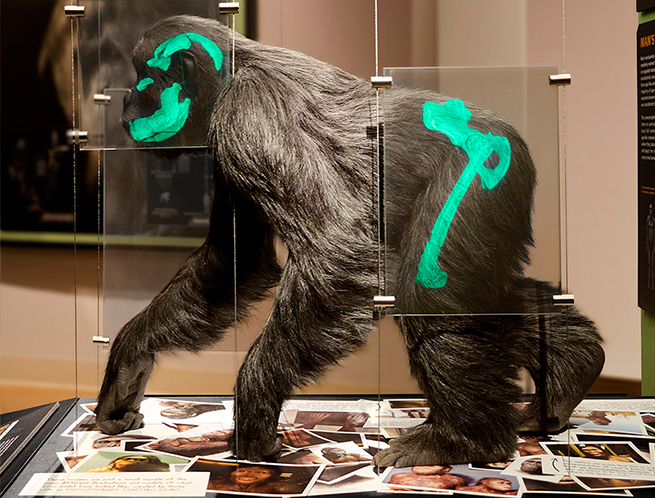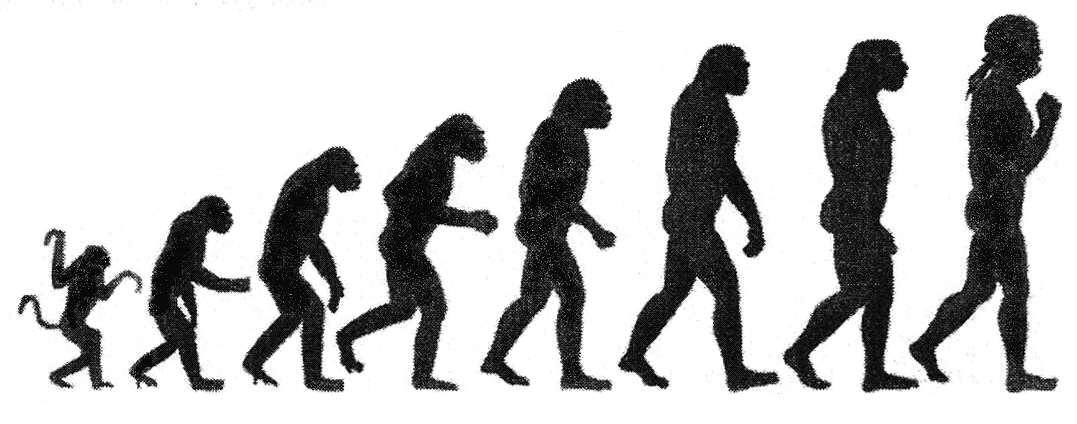
The Human Evolution Ladder Failure Admitted by a Leading Evolutionist
Evolutionists admit Lucy isn’t evidence of human evolution.
November 24, 2024, marks the 50th anniversary of the finding of the famous supposed fossil hominin Lucy, but dubious details about paleoanthropology’s “Simian Superstar” have finally been acknowledged by a leading paleontologist. The find was the “now famous moniker given 50 years ago to a fragmentary nearly hominin skeleton recovered from a hillside in the Horn of Africa.”1 In short, Lucy has not lived up to her status as the most supported fossil evidence of human evolution. One reason for her fame is that she is “one of the most complete early-hominin fossils in terms of the number of bones preserved, even if the quality of their preservation leaves something to be desired.”2 She is an important fossil to the degree that
Despite quibbles over classification, there’s no question that Lucy was and is important to our understanding of human evolution. In 2012, scientist Derek Rossi nominated the spot where she was found for TIME’s list of the most influential places in history: “The single most significant place in human history is where hominids first evolved and emerged,” he said.3
In a current article in American Scientist, Bernard Wood, a professor of human origins at George Washington University and the author of 19 books, including many books and articles on human evolution published in mainline peer-reviewed journals, acknowledges that there is “reason to think that A. afarensis is a good candidate to be an ancestor of modern humans, but I’m not yet convinced. Lucy’s legacies of fieldwork may provide the required evidence, one way or another, in the coming years.”4
Wood’s Frank Admission in Contrast to the Common Dogmatism
The limb length is important to evolution because it would be evidence of her ability to walk upright.
Note the contrast between Wood’s admission and the dogmatism commonly expressed by many evolutionists. Wood wrote, “The good news is that we have pieces of nearly all of Lucy’s six long bones; the bad news is that the missing parts make estimating the maximum length of each limb and its segments (the arm/forearm and thigh/leg) a scientific guessing game.”5 The limb length is important to evolution because it would be evidence of her ability to walk upright. And bipedalism is a critical factor in classifying her as a link between apes and modern humans.
Straight-Line Evolution Refuted
Wood also effectively refuted the straight-line evolution as shown in common illustrations of evolution (see Figure 2). One of the most important acknowledgments that Wood included in his American Scientist paper was the following admission:
In the 1970s, human evolution was conceived of as being ladder-like: With one or two exceptions, fossil hominin species were considered to be rungs on a ladder that connected a common ancestor to modern humans. The species at the bottom of the ladder were more apelike, whereas the ones near the top were more like modern humans. We now know human evolution history is . . . nonlinear; a better analogy is a bush. Only one stem of that bush has managed to survive to the present, and that is us, modern humans.6
In short, the most famous image conceptualizing human evolution, the progression, has now been discarded, according to Wood. What remains is a variety of animals not necessarily related. Many evolutionists now believe a line of descent of humans from apes still exists, but only one branch on the bush is the line leading to modern humans. Which specific branch is largely speculation as are all the links to our supposed, putative, ancient, less evolved ancestors. Another problem is that “of the 650 primate species, the notion that one of them evolved into humans whilst the other 649 remained as apes for millions of years is preposterous.”7 Lucy’s discovery prompted many ideas, some of which have already been proven wrong. A few of these ideas include that humans were not the first bipedal apes and that Lucy’s leg had traits of both humans and other apes. Other conclusions were bipedal locomotion predating large brains, the use of tools, and more human features like the rib cage and teeth evolving later because Lucy’s torso was shaped more like a nonhuman ape and she had small teeth in a robust jaw.8
In 1976, evidence of what some critics infer is the last nail in the Lucy superstar coffin came from Laetoli: Mary Leakey found footprints of similar size to Lucy and presumably from a similar time period, but with feet strongly resembling a modern human.9 This finding indicates that both modern humans and the claimed missing link between our putative ape evolutionary ancestors and modern humans lived at the same time in history. Some of the many problems with Lucy as a transitional link between apes and modern humans are discussed in a review by a former anatomy professor.10

Figure 1. Lucy based on the relevant bones shown in green as displayed at the Answers in Genesis Creation Museum. Note the actual bones shown are critical to answering the question if she was an ape that walked on all four limbs or was bipedal as evolution supporters attempt to claim. Also note that the small skull bone fragments tend to support an ape face, not a human face. As noted by some paleontologists, we do not have enough well-preserved skull bones to confidently support the claims that she was very humanlike.
Summary
The evidence just doesn’t add up for Lucy as the link between some apelike common ancestor of modern humans.
The evidence just doesn’t add up for Lucy as the link between some apelike common ancestor of modern humans. Although the vast majority of scientists still believe that humans evolved in Africa around 2 million years ago from some unknown bipedal ape, like Lucy, since Lucy’s discovery, scientific research has not been very kind to the former superstar nor to evolution itself. Even the progression icon, one of the major propaganda tools used to facilitate the acceptance of human evolution for decades,11 has now fallen into academic disrepute.

Figure 2. “The Progression” icon depicting the assumed stages of ape-to-hominin-to-modern human over supposed evolutionary time in a ladderlike procession. A more well-known and detailed example of the progression is available at https://www.onverticality.com/blog/march-of-progress, which was originally published in Francis Clark Howell, Early Man (Time-Life Books, 1965). It is widely used and has been reproduced scores of times.
Footnotes
- Bernard A. Wood, “Paleo-Anthropology’s Superstar,” American Scientist 112, no. 6 (November–December 2024): 326–327, https://www.americanscientist.org/article/paleo-anthropology%E2%80%99s-superstar.
- Wood, “Paleo-Anthropology Superstar,” 326, emphasis added.
- Lily Rothman, “How Lucy the Australopithecus Changed the Way We Understand Human Evolution,” Time, November 24, 2015, https://time.com/4126011/lucy-australopithecus-discovery/.
- Wood, “Paleo-Anthropology Superstar,” 327, emphasis added.
- Wood, “Paleo-Anthropology Superstar,” 327.
- Wood, “Paleo-Anthropology Superstar,” 327.
- Stephen T. Blume, Evo-Illusion: Why IID Trumps ID and Evolution (Bloomington, IN: Xlibris, 2013), 7.
- See Donald C. Johanson and Kate Wong, Lucy’s Legacy: The Quest for Human Origins (New York: Harmony Books, 2009). Donald Johanson and Maitland Edey, Lucy: The Beginnings of Humankind (New York: Simon and Schuster, 1999). Alison Jolly, Lucy’s Legacy (Cambridge: Harvard University Press, 2001).
- David Menton and Elizabeth Mitchell, “A Look at Lucy’s Legacy,” Answers in Depth 7 (2012): https://answersingenesis.org/human-evolution/lucy/a-look-at-lucys-legacy/.
- David Menton and Elizabeth Mitchell, “A Look at Lucy’s Legacy.” Bergman et al., Chapter 8 in Apes as Ancestors: Examining the Claims About Human Evolution (Tulsa, OK: BP Books, 2020).
- Jerry Bergman, “The Ape-to-Human Progression: The Most Common Icon Is a Fraud,” Journal of Creation 23, no. 3 (2009): 16–20, https://creation.com/images/pdfs/tj/j23_3/j23_3_16-20.pdf.

Answers in Genesis is an apologetics ministry, dedicated to helping Christians defend their faith and proclaim the good news of Jesus Christ.
- Customer Service 800.778.3390
- Available Monday–Friday | 9 AM–5 PM ET
- © 2025 Answers in Genesis



